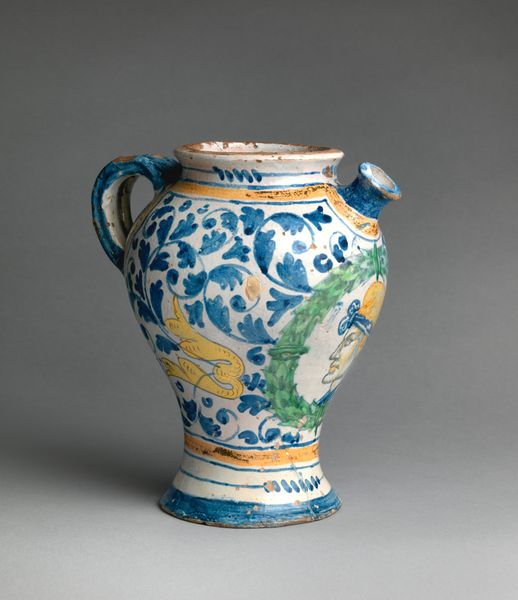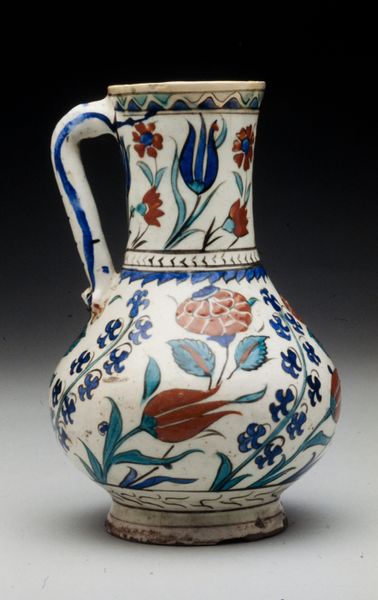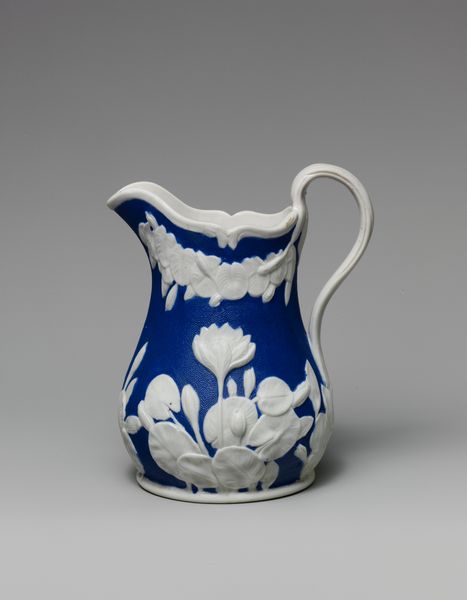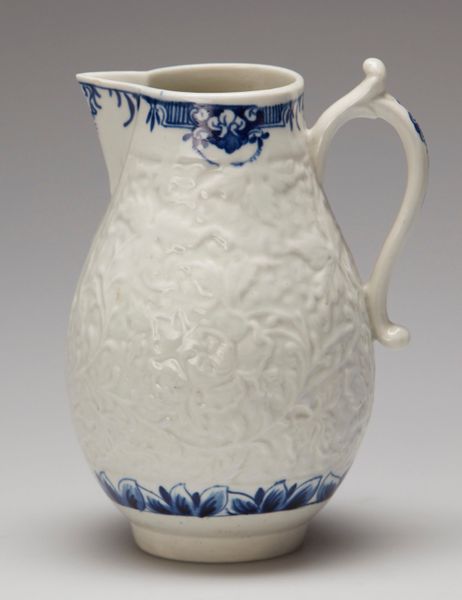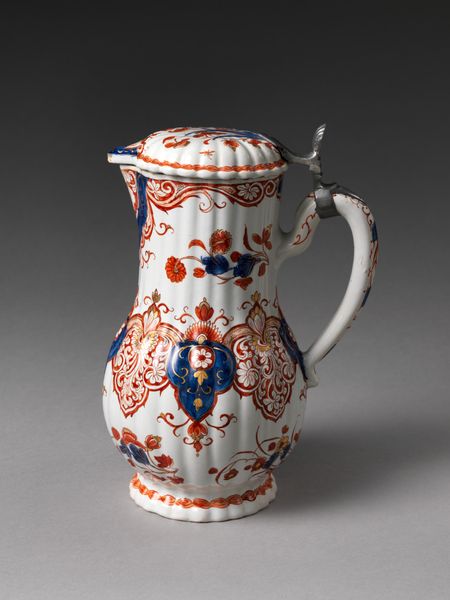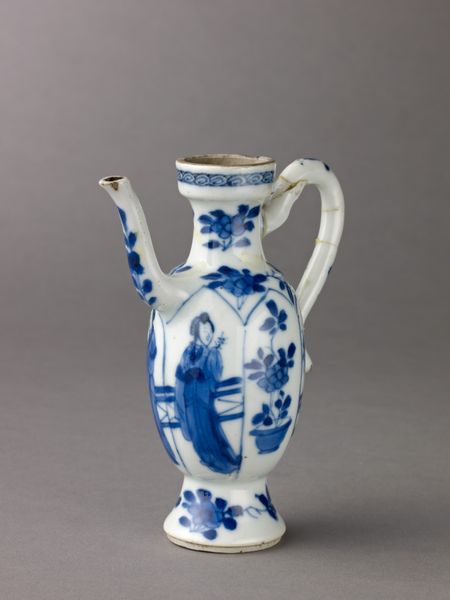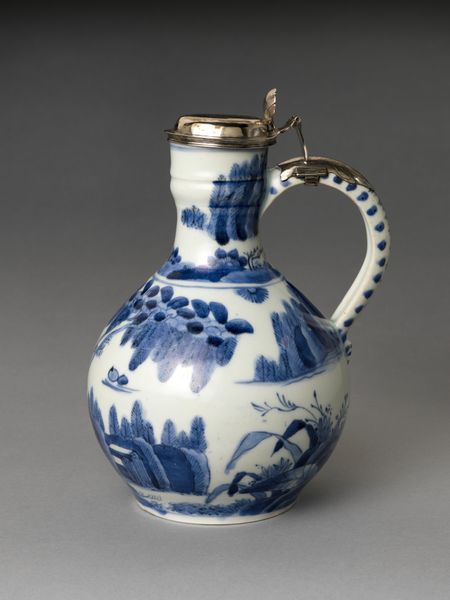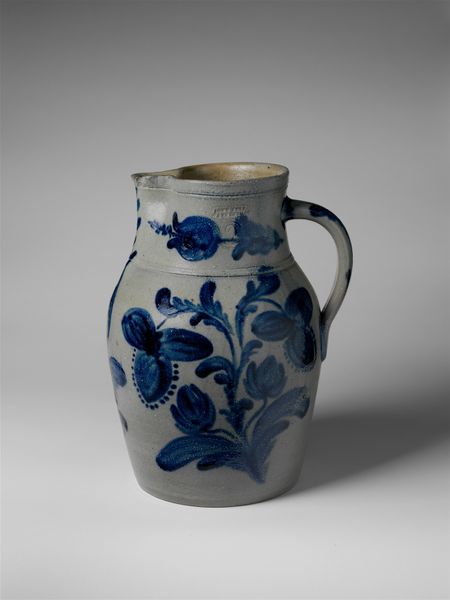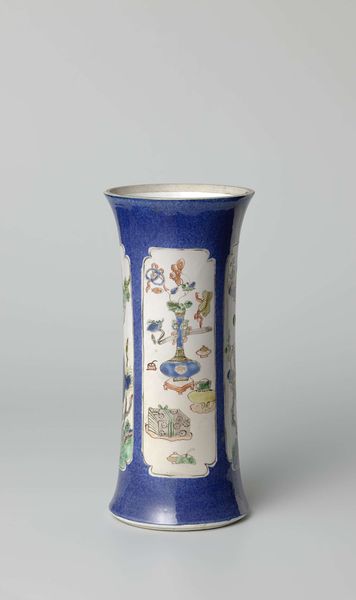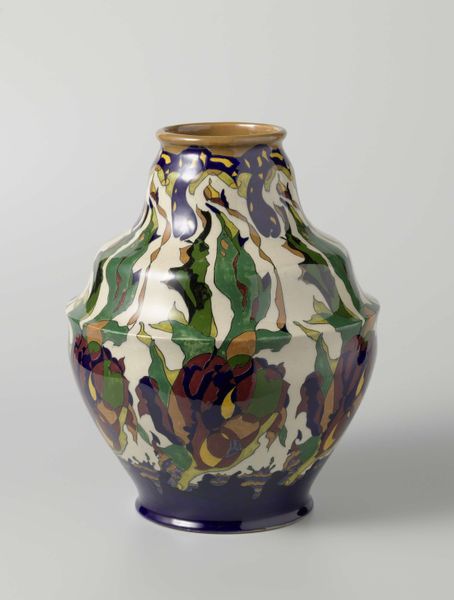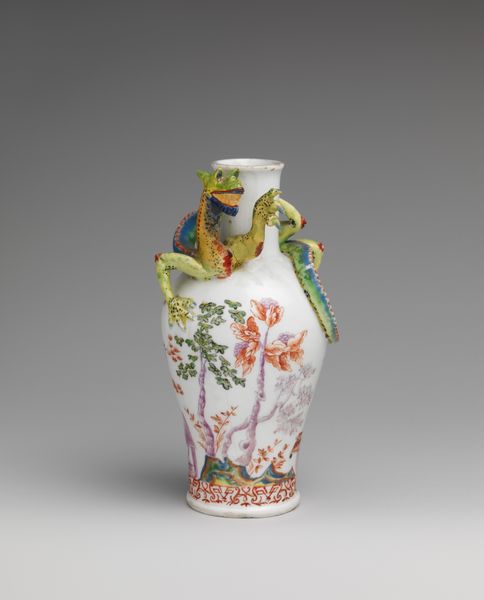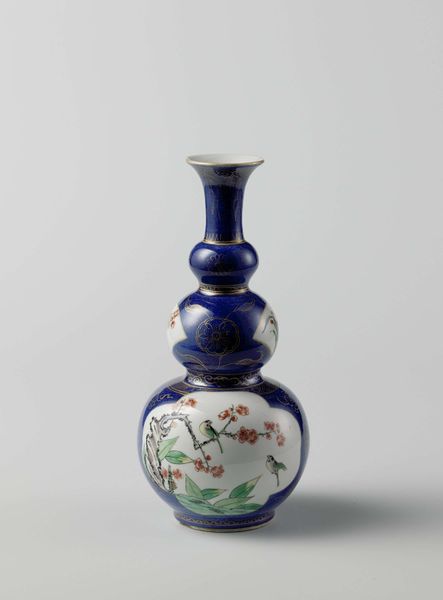
painting, ceramic, earthenware
#
art-nouveau
#
painting
#
ceramic
#
figuration
#
earthenware
#
orientalism
#
decorative-art
Dimensions: height 27.5 cm, height 22.5 cm, width 12.2 cm, depth 10.3 cm
Copyright: Rijks Museum: Open Domain
Editor: So, here we have a covered jar dating back to around 1900. It's earthenware, made by De Porceleijne Fles, decorated with paintings. The jar itself is quite lovely, the paintings of the birds and leaves feel really lively and light. How should we understand its cultural context and historical implications? Curator: This jar invites us to consider the industrialized production of decorative art in the late 19th century. Delftware, which this evokes, had a long history as a hand-crafted luxury. But by 1900, factories like De Porceleijne Fles were transforming its production. Editor: So it’s less about individual artistry and more about factory work? Curator: Precisely. Consider the labor involved – the potters, painters, and factory workers who mass-produced these pieces. How does this commodification impact the meaning and value of the art itself? Does this change how we value art? Editor: That’s a pretty different way to see this piece, versus thinking about the artist's intent! So you are saying we must consider the historical change in manufacturing as part of what gives the work its value? Curator: Absolutely. And how that affects consumption! It was designed for a growing middle class with access to affordable goods. Does this alter the experience and role of art in society? Editor: Fascinating! It changes how I perceive this now knowing about its mass-production and what that represents. Curator: Right? I now notice more. Next time you are here I suggest you inspect the process by which pieces like this were distributed, retailed, and encountered as everyday objects.
Comments
No comments
Be the first to comment and join the conversation on the ultimate creative platform.
